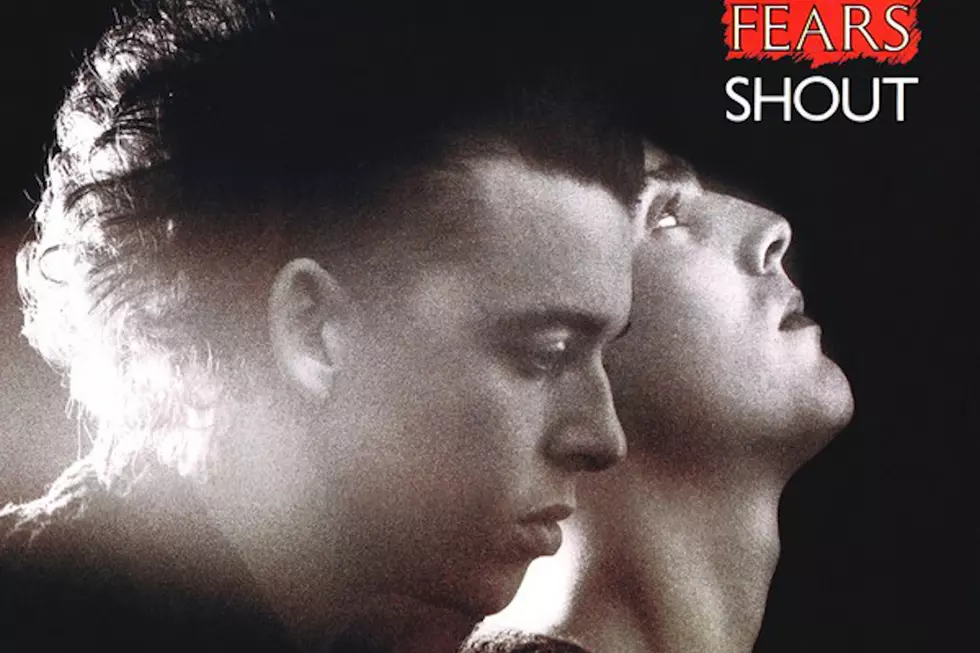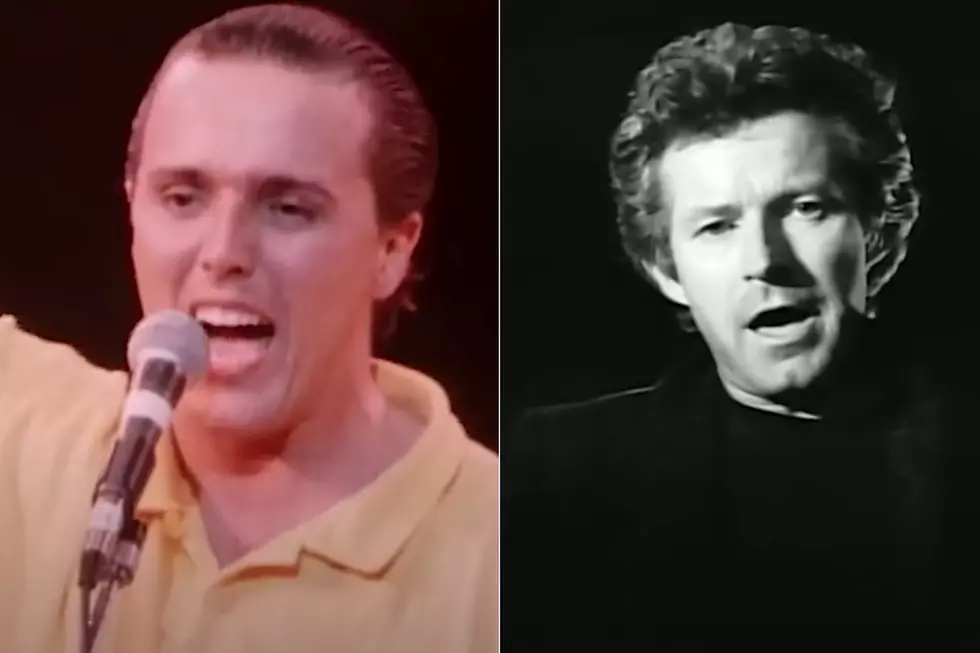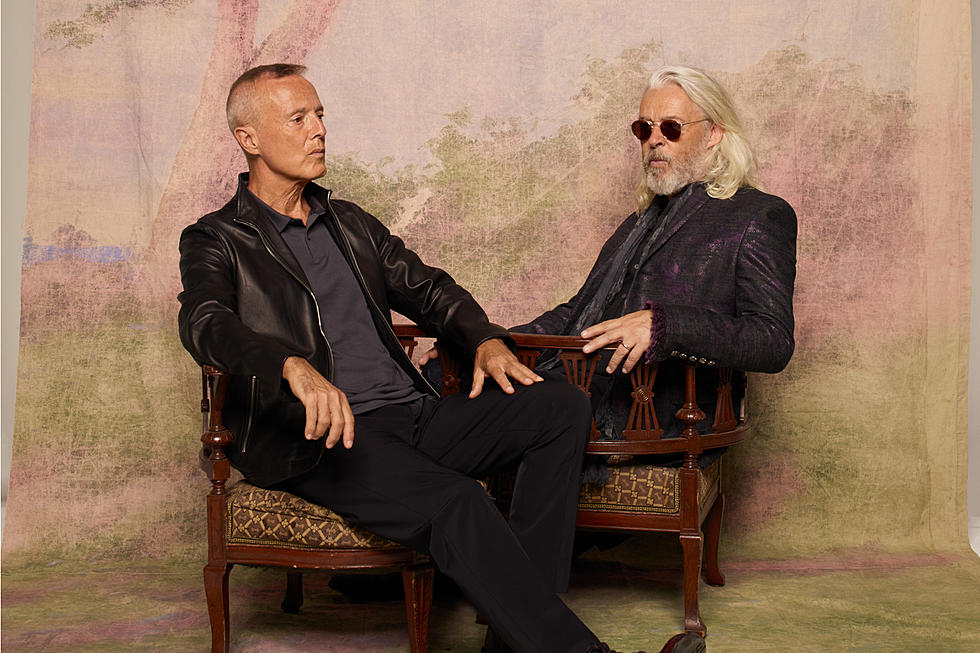
How Tears for Fears Found a Way to ‘Shout’ Their Way to No. 1
When Tears for Fears' single "Shout" hit No. 1 on the Billboard chart on Aug. 3, 1985, it signaled another major turning point in the band's career.
By that time, the group had already become a force in its native England, having successfully broken out with the 1983 debut album The Hurting. Even though Tears for Fears had landed four songs in the U.K. Top 20, similar success eluded them across the pond until earlier in 1985.
Then comprised of guitarist and singer Roland Orzabal, bassist and singer Curt Smith, drummer Manny Elias and keyboardist Ian Stanley, Tears for Fears retreated to work on their next LP, Songs From the Big Chair, they searched for ways to expand their sound. Chris Hughes, who had the produced band’s debut album, was once again enlisted to work with the group.
“What he did really was try to get us out of the synthesizer rut which we were in,” Orzabal later said of Hughes’ influence. “We wanted everything programmed. Each part of the whole had to be interesting in and of itself. What he did was kick that out the window and force me to pick up a guitar and smash the hell out of it.”
When the band assembled in the studio, Orzabal, who handled the majority of the songwriting duties, brought with him the fledgling idea for “Shout.”
“I had the chorus to ‘Shout’ and I had a rhythm which was stolen from a Talking Heads track from off Remain in Light,” Orzabal later recalled. “Ian and Chris played around with the rhythm, and they came up with the flute motif which runs through the verse and the chorus. Ian suggested various notes on the verse and that sent me off on the verse melody.”
The lyrics were inspired by primal therapy, a psychotherapy method created by Dr. Arthur Janov. Its general concept suggests that a patient can conquer early life trauma by reenacting the scene through unrestrained screaming. The methodology was influential on many artists, including John Lennon. Janov published his theory in the popular 1970 book, The Primal Scream.
Watch Tears for Fears' 'Shout' Video
“We both had what we thought at the time were disturbed and difficult childhoods,” Orzabal explained years later. "The book very much resonated with us because it put the blame clearly at the feet of the parents. So we were like, 'Yes!'" As "Shout" began to take shape, its theme took on deeper meaning.
Describing the track as “a simple song about protest,” Orzabal noted how its creation affected the band’s future lyrical content. “You could see the slow transition from the personal perspective to a more social and political perspective. And ‘Shout’ is the lynch pin.”
From a musical standpoint, the track also allowed Tears for Fears to embrace a broader sound.
“The song had to be quite big as well and the arrangement a bit more interesting,” Smith noted, adding that the band had to “not be too worried about something that was big and obviously bombastic, which wasn’t in our nature at that point in time.”
“I was a little taken back,” Orzabal admitted. “Because [the band’s music] was quite fragile before then. It’s like, ‘Can we really do it like this?’ I mean, it sounded so heavy.”
Initially released as a single in the U.K. in November 1984, “Shout” took a longer road to the top of the Billboard chart in the U.S. Following the No. 1 showing of "Everybody Wants to Rule the World" earlier in the year, as well as the LP's reaching of the top spot, "Shout" was released as a single and eventually hit No. 1 in the States on Aug. 3. It stayed there for three weeks.
The song’s success helped propel Songs From the Big Chair, which went on to sell more than 5 million copies in the U.S. Another single, "Head Over Heels," hit No. 3, cementing Tears for Fears as one of the biggest acts of the ‘80s.
Top 40 New Wave Albums
More From Ultimate Classic Rock









